(This is a follow-up to this related question).
I'm interested in some feedback from people's design results/experiences with Castellated PCBs as a method of attaching one PCB to another. By Castellations, I am referring of course to Half-vias or Edge plating, as follows (both images are from Stack):

It seems to be an elegant solution, and appears to be a fairly popular form factor, especially among RF modules.
But I am concerned with (and would like comments regarding):
- how robust the mechanical contact is
- how reliable the electrical contact will be
- what design methods/factors might influence the quality of the connections
E.g., one layout approach, as described by @Rocketmagnet in the earlier related question, is to place vias on the dimension outline, thus half-drilled holes act as the solderable castellations. Is this a standard/accepted method, or should a designer actually contact the PCB manufacturer and custom-design the board specifically requesting castellation addition?
As seen in the image below, results with the half-size plated through-hole approach (from this person's blog) aren't too impressive (the page's author holds the poor milling responsible).

